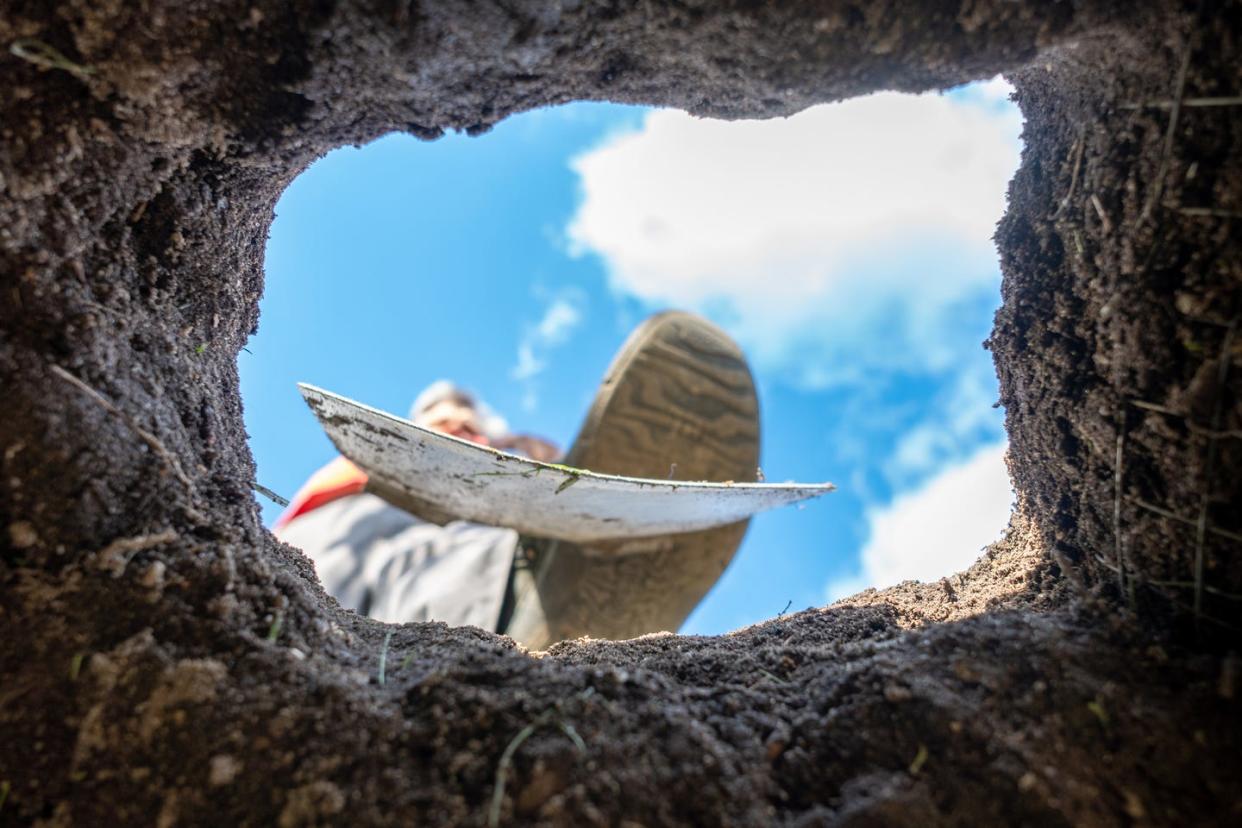Miners Went Looking for Gold and Accidentally Found Something Better: an Ancient Woolly Rhino

Miners accidentally uncovered a mummified wooly rhinoceros and a preserved horn at a dig site in Russia.
Under special conditions, permafrost mummifies plant and animal remains through a process similar to freeze-drying.
Previously, only five wooly rhinoceros remains with soft tissue had been found in Yakutia.
During the height of the Ice Age, the wooly rhinoceros—standing more than six feet tall and 16 feet long—roamed across the frigid landscapes of Asia, Europe, and Africa. They even coexisted with humans, until they went extinct 12,000 years ago.
Today, it’s hard to imagine these behemoths as anything more than mythical creatures. But they’re real, alright. And a group of miners just found one in Russia.
In the Oymyakon District of Sakha Republic (Yakutia), Russia, miners accidentally uncovered the mummified carcass of a wooly rhino—including a preserved horn. The specimen is incredibly scientifically valuable, as only five other wooly rhino remains with preserved soft tissue had been discovered in the area.
“Until today, there was no such rare find in the collection of the Mammoth Museum,” Maxim Cheprasov, the Senior Researcher and Head of the Laboratory of the North-Eastern Federal University (NEFU) Mammoth Museum, said in a digitally translated press release. “In the modern history of NEFU, this is the first such find - the carcass of a wooly rhinoceros with soft tissues.” The horn was donated to NEFU, and the rest of the remains are to be excavated in the coming months.
Researchers studying the horn believe it to be a rear frontal one that belonged to a mature rhinoceros, but more comprehensive studies will be needed to determine the exact age and sex of the animal. The researchers will, according to Cheprasov, eventually be able to compare the genes of this creature to those of other previously studied specimens, and investigate any genetic links that may come to light.
For instance, this past June, scientists at NEFU autopsied the over-44,000-year-old remains of a wolf. According to another press release, the specimen’s stomach was completely preserved, allowing researchers to study the animal’s diet, the diet of its prey, and even ancient viruses. And these two specimens are not the only notable discoveries in the region. According to NEFU’s press release regarding the rhino, “a significant part of all the world’s known unique finds of mammoths, wooly rhinoceroses, bison, musk oxen, cave lions and other animals of a bygone era have been discovered in Yakutia,” likely because the high amount of permafrost in the region.
Permafrost includes any soil, sediment, rock, or sand that remains below 32° Fahrenheit (0°C) for over two years. The constant freezing conditions preserve soft tissue through a process similar to freeze-drying. The highest concentration of permafrost in the Northern Hemisphere falls poleward of 60 degrees in Russia—which just so happens to be where Yakutia falls.
Permafrost mummies are rare, according to Julie Meachen, an associate professor of anatomy at Des Moines University. “The animal has to die in a permafrost location, where the ground is frozen all the time, and they have to get buried very quickly, like any other fossilization process,” she said. “If it lays out on the frozen tundra too long it’ll decompose or get eaten.”
But when we are able to find them, they’re regarded as absolute treasure troves of information. The seemingly miraculous finds in Yakutia will help researchers better understand climate, geographical, and biological factors of the ancient world, according to Cheprasov.
“The donated fossil rhinoceros carcass is not just a valuable exhibit for the Mammoth Museum, but also an incredible resource for scientific research,” he said. “I would like to note that the transfer of the find to the university is a vivid example of how cooperation between business and science can benefit the entire region.”
You Might Also Like
